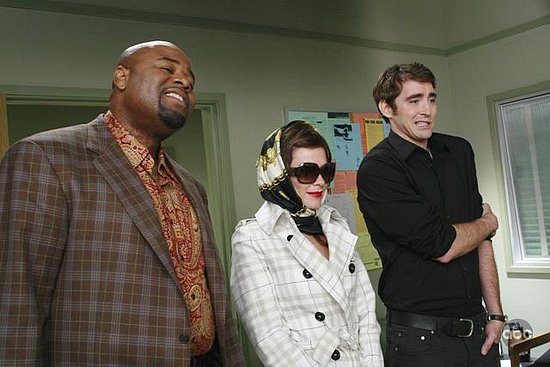
Starring Lee Pace and Anna Freil as star crossed lovers, the story centers around Ned, a piemaker who touches things and brings them back to life. The catch being that he must touch them again within sixty seconds, or something within the vicinity will die as well, and once he does touch them, they're dead, for good. When he finds that his long-lost childhood crush, Lonely Tourist, Charlotte Charles, whose father Ned had inadvertently killed in their youth, is now a young beekeeper who has met her untimely end at the hands of a plastic smiley face bag and a shiny-shoed murderer, he simply cannot bear to bring himself to touch her again. This means that he gets to be reunited with his soulmate, at the price of well, never touching her again (though they do find some creative and strangely, not at all kinky, solutions to this). Together with private investigator Emerson Cod and scorned waitress Olive Snook, they solve mysteries and murders, such as that of a woman driving an eco-friendly car powered by dandelions, all while making pastries.
It is a hilarious, heartwarming program with the kind of fantastical imagery you might expect from Tim Burton's more optimistically-minded cousin, shot through with turn of the century charm and a spectacular play of contrast colours (someone went to art school), calling to mind both the poetic dynamism of European renaissance art, and the charm of American folk and modern, such as the subjects of Edward Hopper and subtlety of Jasper Johns. It's quirky, without trying too hard, unlike many other "indie" ventures in television. It's sweet, without wallowing in preciosity, philosophical, without rolling around in existentialism all the live long day (*coughHousecough*). In short, in a television landscape dominated by crime dramas and vapid guilty pleasures, it was and is brilliant.

Style wise, they're all fascinating and calculated characters. But my favourite remains Charlotte "Chuck" Charles.

Usually seen in her signature red and a variety of hokey wigs and babushka scarves to hide her identity, her style is retro without being overbearing. It's a mix of 50's tea dresses, 60's babydolls and 70's boots and minis combos, with some modern twists like high waisted tulip skirts thrown in, her wardrobe allows you to never put a "realistic" timeline or date on the show, adding to the fantastical appeal.



Postscript- Dear readers, I am in need of more probing from you! If I am to do a Q&A that's remotely satisfying or revelatory, I really do need a wider berth of questions from all of you, so go ahead, lay them on me. If you would prefer to keep it private/anonymous, feel free to email me. My address is in the sidebar. Thanks!



















